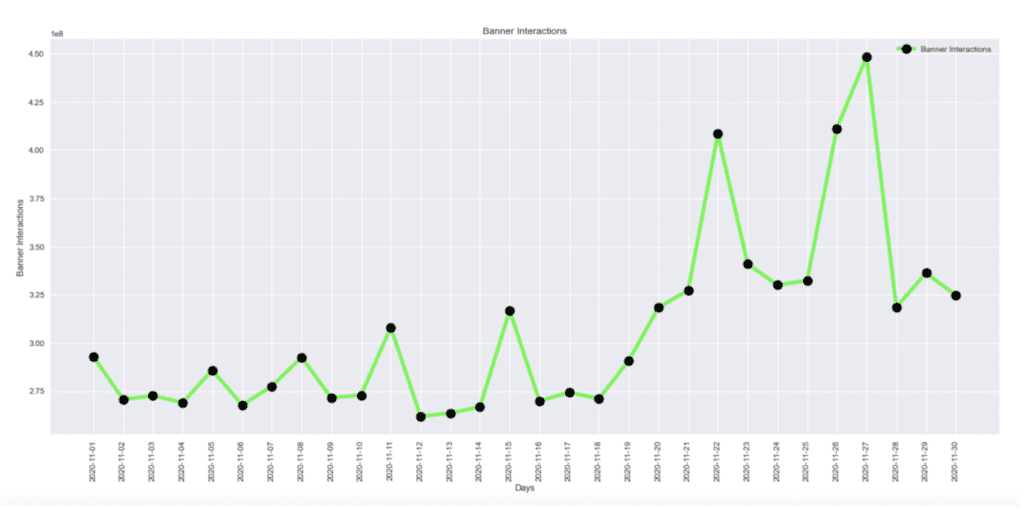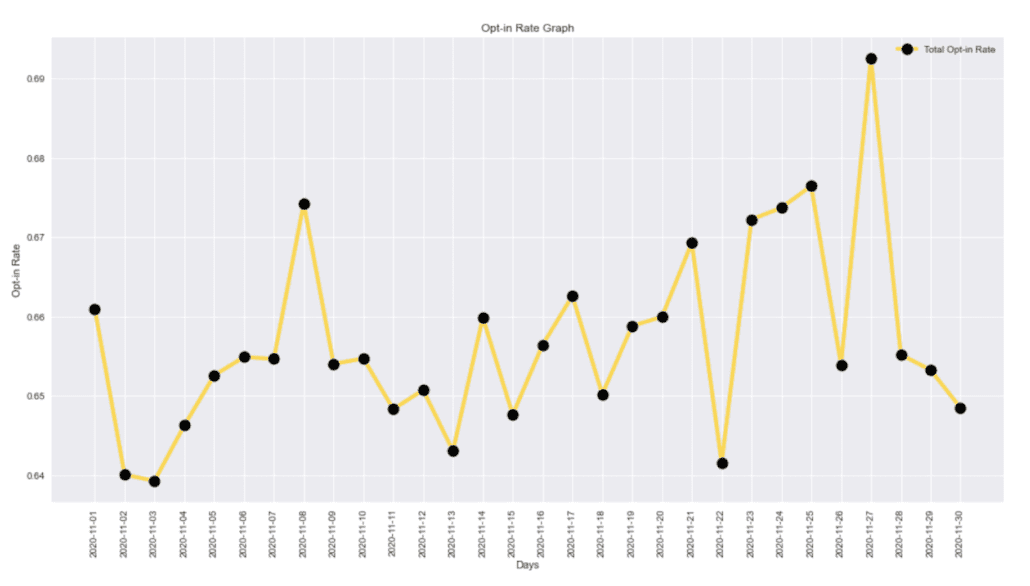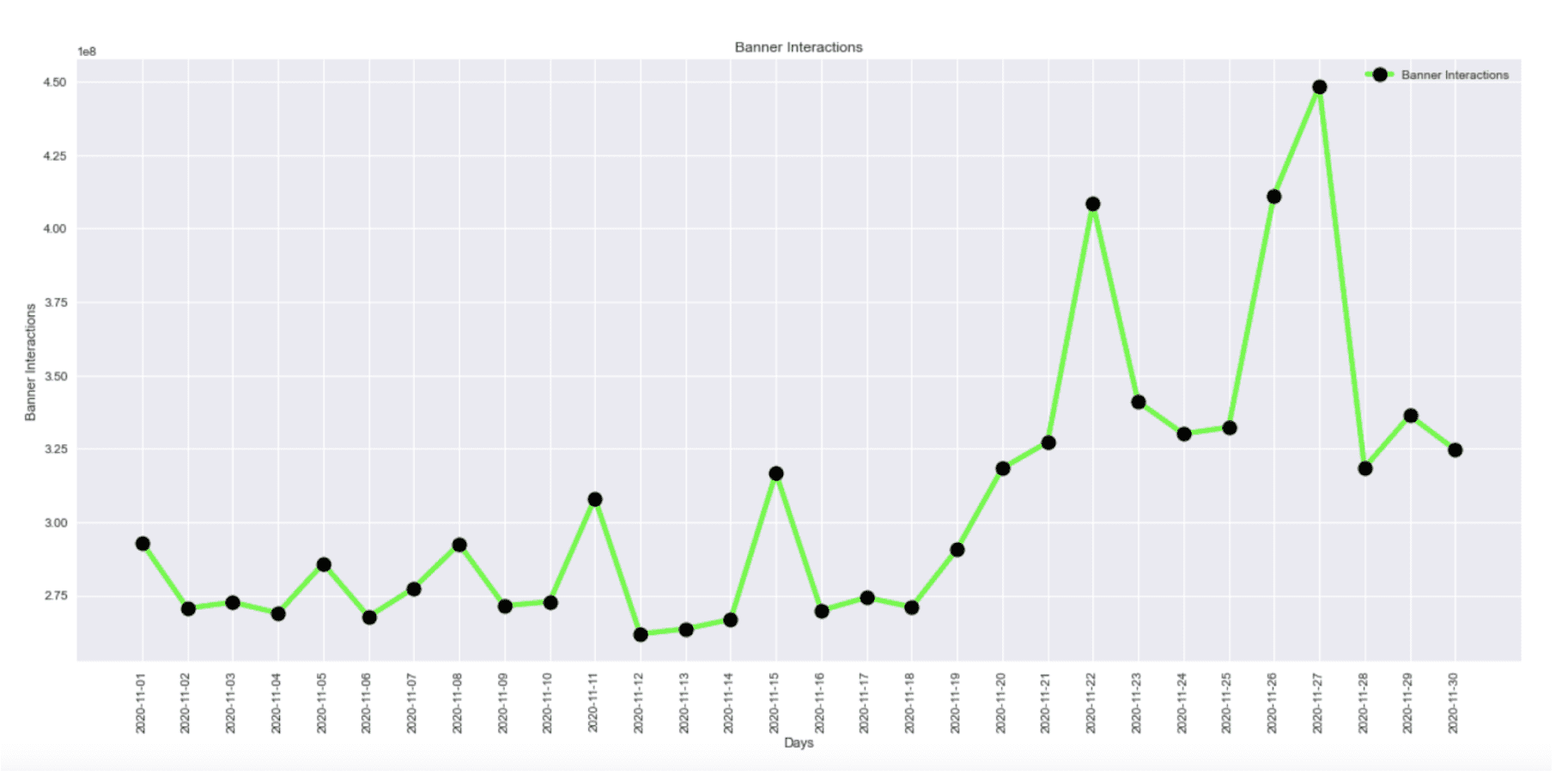As the first advent Sunday was approaching this year, many German online merchants heralded the start of Christmas trading on 27th November 2020 – Black Friday. But it wasn’t just on this day that they gave customers generous discounts, many of them extended it to an entire Black Week. But what about data protection? What is still important with regard to special offers? Do customers throw caution to the wind regarding their privacy with offers and discounts of 35%, 40% or even 50%? Is the “annoying” privacy banner more likely to be accepted if, in the next step, the reward of a generous discount is waiting? To answer this question, we examined the Opt-in rates from November 2020 of 22 large German online shops.
Great offers cause awareness of data protection to decrease
The finding: From 18th November, i.e. about a week prior to Black Friday, the number of banner interactions increases steadily. Their peak is reached on 27th November, on Black Friday itself.
Good to know: Users interacted with a cookie banner an average of 450 million times on Black Friday. This value is around 66% higher than the average November value which amounts to 300 million. The interactions drop off again after 27th November but remain at a generally elevated level.

In addition to the general banner interactions, the Opt-in figures (both total and explicit) show a similar picture:

Conclusion: When great offers beckon, data protection awareness decreases. Users in this situation are predisposed to click on “Accept” in a cookie banner.
Lessons Learned for Digital Marketers
Which conclusion can be drawn by marketers wishing to practice data driven marketing? Here it is worth having a thorough look at the granular level and examine the Opt-in rate for individual data processing technologies.
The Facebook pixel is one DPS (data processing service) playing a big role primarily with personalization and retargeting and is therefore used by many website operators. Here you can see that consent to the use of pixels rises by up to 17.24% during Black Week. If the offer is right, then users are in turn ready to provide their consent.
